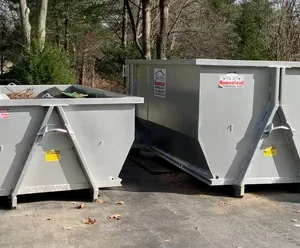In an era of rapid urbanization and expanding metro networks, passenger safety and infrastructure protection have become critical priorities. With millions of commuters using metros and other public transport systems daily, ensuring that no prohibited or dangerous items enter secure premises is a non-negotiable responsibility.
At the core of this security infrastructure lies one essential technology — the baggage X-ray scanner.
The advanced baggage X-ray machine is not just a piece of security hardware; it’s a high-precision detection system designed to safeguard passengers, staff, and property by enabling fast, accurate, and non-intrusive inspection of personal belongings.
From metro stations and railway terminals to bus depots, airports, and regional bullet train stations, these scanners serve as the first line of defense in preventing security breaches and maintaining public safety.making them a reliable choice for modern baggage scanner machine requirements
Why X-Ray Baggage Scanners are Essential in Metro Security
Unlike airports where luggage is large and planned for long-distance travel, metro facilities deal with continuous passenger flow and smaller baggage volumes — yet the risk of security threats remains significant.
Every passenger entering a metro system may carry backpacks, handbags, or briefcases that could potentially conceal metallic or non-metallic threats.
Hence, X-ray baggage scanners are installed at every metro entry gate to ensure that:
- All luggage passes through a non-invasive scanning process.
- Security personnel receive real-time high-resolution images.
- Suspicious objects can be identified and isolated immediately.
These scanners operate alongside door frame metal detectors (DFMDs) and hand-held metal detectors (HHMDs), forming a multi-layered security ecosystem.
At the heart of this ecosystem, the baggage scanner remains the most critical device — providing visual confirmation of concealed threats, prohibited items, or dangerous substances.
Typical Configurations for Metro Facilities
For metro stations, the 60 × 40 cm tunnel size is the most widely adopted standard for baggage scanning.
However, depending on location and volume, other sizes like 50 × 30 cm, 65 × 50 cm, or even 100 × 100 cm can be deployed.
Key Size Variants:
- 50×30 cm – Compact design for low-footfall stations.
- 60×40 cm – Ideal standard for daily metro operations.
- 65×50 cm – Slightly larger tunnel for better scanning versatility.
- 100×100 cm – For high-traffic areas or multi-bag inspections.
At busy metro hubs, dual-view baggage scanners are preferred — providing two simultaneous images of each bag from different angles for complete 3D visualization of contents.
Single Generator vs Dual Generator Technology
In the evolution of baggage X-ray scanners, two main categories exist: single generator and dual generator (dual-view) systems.
Single Generator Systems
- Use a single X-ray source to generate a 2D image of the baggage.
- Ideal for smaller stations with moderate passenger load.
- Compact, energy-efficient, and cost-effective.
Dual Generator Systems
- Equipped with two X-ray generators positioned at perpendicular angles.
- Provide dual-view images — typically from top and side perspectives.
- Allow operators to visualize hidden or overlapping objects more clearly.
- Reduce manual re-scans and false alarms.
In modern metro facilities, dual generator X-ray baggage scanners are now the standard due to their enhanced image clarity, multi-color display, and faster inspection process.
They help security officers — such as CISF personnel in India — quickly identify the nature, shape, and material density of items inside a bag, saving valuable time during peak commuter hours.
Advanced Imaging and AI Integration
One of the most remarkable advancements in recent years is the integration of Artificial Intelligence (AI) into baggage X-ray scanners.
AI-enabled baggage scanners automatically:
- Highlight suspicious or restricted items with color-coded outlines.
- Label identified objects (e.g., knife, battery, aerosol, or firearm).
- Reduce operator fatigue by focusing attention on high-risk areas.
- Support faster throughput without compromising accuracy.
This capability provides intelligent threat detection even when the security operator is managing multiple screens or high passenger flow.
The dual-display setup — one showing the vertical view, the other showing the side view — offers a comprehensive 3D perspective, helping operators confidently approve or reject scanned items.
With color-enhanced imaging and AI overlays, security teams can identify anomalies in seconds, increasing the safety of the metro network while maintaining commuter convenience.
Performance Parameters That Define Quality
Beyond imaging technology, a professional-grade X-ray baggage scanner is defined by its technical parameters, ergonomics, and reliability.
Key Parameters:
- Penetration Level: Ability to scan through dense or metallic materials (typically 30–40 mm of steel).
- Resolution: High-resolution imaging to distinguish between organic and inorganic materials.
- Tunnel Dimensions: Optimized based on traffic volume.
- Scanning Speed: Fast conveyor speed (0.2 to 0.3 m/s) for quick throughput.
- Image Processing: Multi-color imaging for material differentiation (organic/inorganic/metallic).
- Storage Capacity: Local or network-based archiving of scanned images.
- Safety Standards: Lead shielding, radiation leakage protection, and automatic power cut-off mechanisms.
These features ensure that the machine not only scans accurately but also operates safely in high-footfall environments like metros and transit stations.
Operator-Friendly Controls and Ergonomics
For security personnel, ergonomics and control accessibility are vital.
Modern baggage scanners — such as those developed by Houston Systems — include:
- Intuitive keyboards with dedicated zoom, rewind, and color enhancement keys.
- Customizable alarm functions for immediate alerts on detection.
- LED-based signal indicators to show system readiness.
- Trolley conveyors that make baggage handling smoother for commuters.
The operator can move images forward or backward, zoom in on suspect areas, or apply pseudo-color filters for better material differentiation.
All these functions together reduce inspection time and operator fatigue, increasing security throughput efficiency.
Integration with Metro Security Ecosystems
At major metro facilities, X-ray baggage scanners are integrated within a broader security ecosystem, including:
- Door Frame Metal Detectors (DFMD)
- Hand-Held Metal Detectors (HHMD)
- CCTV Surveillance Systems
- Access Control & Turnstile Gates
- Command Control Centers (CCC)
All systems work in harmony — enabling metro security teams to:
- Verify passenger and baggage identity simultaneously.
- Monitor live video feeds and alarms in real time.
- Generate event logs and scan archives for audits.
This integrated command environment ensures that any suspicious baggage can be instantly traced, flagged, and acted upon — minimizing response times and maximizing passenger safety.
AI, Analytics, and Cloud Integration
The future of metro security lies in data connectivity and cloud-based analytics.
Next-gen X-ray baggage scanners now come equipped with:
- Network connectivity (Ethernet, Wi-Fi, TCP/IP) for remote monitoring.
- Cloud data storage for centralized image management.
- Analytics dashboards to analyze threat trends, scan counts, and device performance.
- Software diagnostics for predictive maintenance and uptime tracking.
This intelligent data layer turns X-ray baggage scanners into connected security devices — not just passive imaging machines.
By integrating with cloud platforms, metro administrators can monitor multiple stations, receive alerts for technical faults, and ensure system health from a single dashboard.
Global Innovations and Trusted Brands
Globally, several leading manufacturers are driving innovation in X-ray security scanning.
- Smith Detection – Known for its high-end dual-view scanners and AI-integrated threat detection.
- Rapiscan – Offers compact yet high-performance systems for public transport hubs.
- Adani Systems – Focused on indigenous production with reliable performance metrics.
- Morpho Detection – Renowned for advanced material discrimination and image resolution.
- Houston Systems – One of India’s emerging leaders in integrated security automation, offering intelligent, metro-ready baggage X-ray scanners with AI-based analytics, dual generators, and ergonomic design.
Houston Systems’ baggage X-ray scanners combine robust engineering with user-centric innovation, ensuring that every scan is accurate, fast, and compliant with global safety standards.
Key Advantages of Advanced X-Ray Baggage Scanners for Metro Stations
Implementing advanced X-ray baggage scanners in metro facilities ensures:
✅ Faster Passenger Throughput – High scanning speed and AI-assisted identification reduce queues.
✅ Improved Detection Accuracy – Dual-view imaging provides multi-angle clarity.
✅ Enhanced Security Assurance – Detects metallic, organic, and composite threats.
✅ Operator Convenience – Simple interface and real-time image processing.
✅ Integration-Ready Design – Seamlessly connects with surveillance and access systems.
✅ Safety Compliance – Adheres to radiation and operational safety standards.
✅ Energy Efficiency – Power-optimized generators for 24×7 usage.
✅ Data Intelligence – Cloud connectivity and central reporting dashboards.
Together, these features deliver stronger security coverage, faster inspections, and smoother commuter experiences.
Why Houston Systems is a Trusted Choice
With decades of experience in security automation, surveillance, and access control, Houston Systems has positioned itself as one of the trusted suppliers of baggage X-ray machines for metro, railway, and transportation sectors.
Their advanced scanners come equipped with:
- Dual generator technology for two-view imaging.
- AI-based object classification.
- High-penetration imaging for dense baggage.
- Compact footprint and ergonomic design.
- Low maintenance and high uptime operation.
- Optional integration with cloud analytics platforms.
Every product from Houston Systems undergoes strict quality assurance and radiation safety testing, ensuring full compliance with metro authority standards and CISF operational requirements.
The result is a reliable, intelligent, and metro-ready security scanner that strengthens every layer of passenger protection.
Final Thought
As cities grow and transportation networks become busier, security technology must evolve faster than the threats it protects against.
The advanced X-ray baggage scanner has become indispensable for every metro and public transport system — ensuring that security checks are swift, accurate, and reliable.
With AI-driven analytics, dual-view imaging, and network integration, modern scanners like those offered by Houston Systems, Smiths Detection, Rapiscan Scan, Adani, and Morpho represent the next generation of intelligent screening technology.
In metro stations and other mass transit facilities, these scanners don’t just detect threats — they deliver confidence, safety, and operational excellence to millions of passengers every day.






